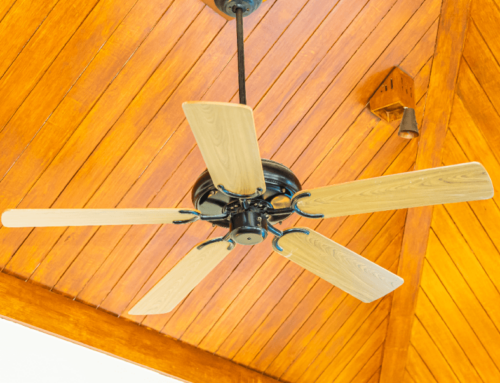We live in a technological era powered by electricity, and our energy dependence continues to increase. But with that increased use comes increases in our carbon footprint. That’s left many of us looking for ways to reduce our daily energy use.
Fortunately, there are many steps we can take to improve our energy efficiency. These steps include incorporating more energy-saving products and appliances into our homes.
What Is an Energy-Efficient Product or Appliance?
Energy-efficient products and appliances are created using techniques and designs that reduce the energy necessary for their function.
For example, a refrigerator’s improved design can require less energy to keep things cool, or a dishwasher may use less electricity to heat water. Alternatively, an energy-saving product may function by reducing or cutting off the amount of electricity products consume when they’re not in use, such as with advanced power strips.
In the case of energy-smart appliances, you can measure a unit’s efficiency by looking for its ENERGY STAR label. The label is only available if a device uses less energy while meeting or exceeding appliance performance.
Tips for Finding the Best Energy-Savings Products for Your Home
Ready to reduce your carbon footprint by integrating energy-saving products into your home? Here are some tips to help you find the best appliances and devices for your home.
- Look for the energy rating.
- Size matters, so don’t buy appliances larger than you need.
- Go easy on add-ons that reduce efficiency.
- Contact your utility supplier to learn about available rebates and rewards programs.
- Hire a home energy assessor to find problem areas in your home.
- Look for cycle choices on appliances.
- Always compare while shopping.
3 Energy-Saving Products for Your Entire Home
General energy-efficient products work throughout your home. These small changes go a long way and will help you cut back on energy dependency, no matter the size of your home.
1. Energy-Efficient Light Bulbs
Traditional incandescent light bulbs are still used in many homes, but more modern alternatives are available to reduce electricity use. The most efficient bulbs are LEDs, many of which include smart features to pair with wireless smart-home devices, like Alexa or Siri, so you can turn lights off from any room in your home.
2. Smart Thermostats
If it’s hot outside, you likely want your home to be cool when you arrive. If it’s cold outside, you want it to be toasty. We love our creature comforts, but there’s no need to keep your thermostat set at one temperature throughout the day, cooling and heating your home when there’s no one there to enjoy it.
Smart thermostats connect to Wi-Fi networks to let you control your home’s temperature remotely from your smartphone. Many of these devices allow you to build an energy-efficient schedule to set it and forget it.
3. Advanced Power Strips
Did you know appliances and devices will continue pulling electricity, even when “turned off?” Put simply, they’re not “off.” They’re idle. Indeed, around 25% of residential energy consumption occurs from powered-down devices.
Advanced power strips are an easy solution that stops devices from drawing power while idle, so they’re actually off.
2 Types of Products Designed for Outdoor Energy Efficiency
Don’t think energy-saving products stop at devices and appliances inside your home. Here are a couple of ways to reduce your energy consumption and water usage outdoors, too.
1. Smart Sprinklers
Do you use automatic sprinklers to water your lawn or garden? Smart sprinklers put you in control of when and how long your lawn is watered, preventing over-watering and cutting down on water and energy usage. Many of these products let you set water schedules and, by connecting to your home’s Wi-Fi network, let you turn your sprinkler system on or off from anywhere.
2. Motion Sensors
If you use outdoor lighting like porch or walkway lights, you need motion sensors. Motion sensors power on lights when movement is detected, like someone approaching your home. These options are far more energy efficient than having a light running all night outside.
3 Major Energy-Smart Appliances to Invest In
Large home appliances make up a hefty portion of your energy consumption. That’s why energy-smart appliances are one of the best ways to reduce your energy dependency and carbon footprint. This is especially true if you’ve been relying on an older model or you’re looking for replacement options.
1. Refrigerators
You’ll find a refrigerator in almost every household, so it makes sense that older fridges are a residential energy sink.
Fortunately, modern refrigerators are becoming more and more energy-efficient. While that may mean higher purchase prices, getting an upgrade can reduce your usage and carbon footprint.
In addition to how a fridge is made and designed, and its material composition, three significant variables impact energy use:
- Where the freezer is located
- How the refrigerator is insulated
- The size of the fridge
If you’re ready to buy a new energy-efficient refrigerator or just browsing, check out our energy-efficiency refrigerator buying guide for more information.
2. Dishwashers
Energy-efficient dishwashers save more than just energy. They’ll also help you cut back on your water usage. A standard-sized ENERGY STAR model will save about 3,870 gallons of water over the product’s lifetime. That’s a lot of water.
So how is that possible? It’s all about the design. Modern energy-saving dishwashers utilize innovations like better water filtration, dish rack designs, jets, and soil sensors. Like refrigerators, there are a few things you should look for when shopping for a new dishwasher, including:
- If the unit is an ENERGY STAR
- Multiple wash cycle options
- Whether or not it’s the right size for your home
3. Washers & Dryers
Like most Americans, you’re washing more than 300 loads of laundry every year. That’s a lot of energy and water usage. But what if you upgraded to an ENERGY STAR model? These models use around 33% less water and 25% less energy. Modern washers have an average life expectancy of 11 to 14 years, so a new washer is a wise investment.
On the other hand, your dryer is one of your home’s most significant energy-draining appliances. Not only do dryers boast high energy use, but they account for around 5.8% of residential CO2 emissions. Yikes.
For a modern dryer to get its ENERGY STAR label, it must use 20 percent less energy while meeting its performance requirements.
We recommend switching to energy-smart appliances for both your washer and dryer. Fortunately, many suppliers provide additional incentives when buying washer and dryer combos instead of just purchasing one or the other.
Energy Efficiency Starts with You
We all depend on electricity, but that doesn’t mean we can’t cut back on what we use in our day-to-day lives. From energy-saving products to choosing renewable energy, energy efficiency begins with you.
Energy-saving products and carbon footprint reduction go hand-in-hand. Call Kiwi Energy and get renewable gas and energy to your home!






